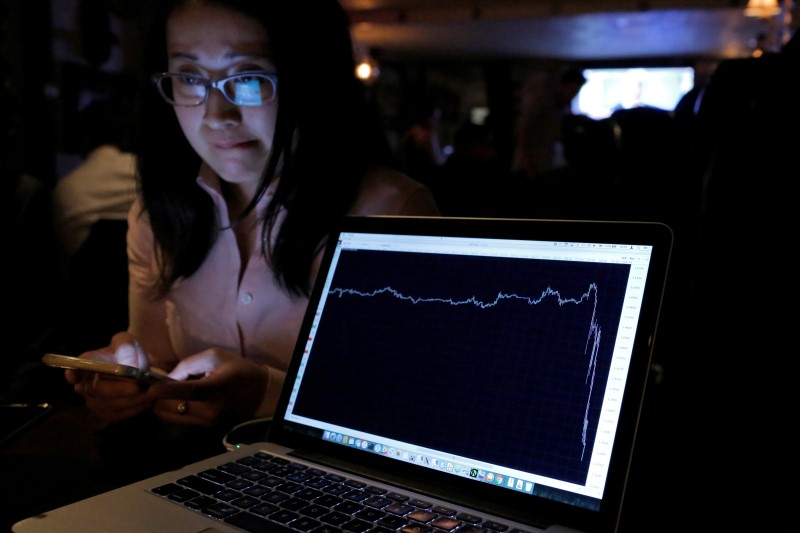By Jamie McGeever
LONDON (Reuters) - Sterling's slump since Britain voted to leave the European Union is the biggest drop of any of the world's four major currencies that make up the bulk of global hard cash reserves since the collapse of Bretton Woods.
The pound's 8-percent fall against the dollar on June 24 was its biggest one-day fall since the era of free-floating exchange rates was introduced in the early 1970s, Reuters data shows. That loss has extended to as much as 13 percent since.
That was nearly double the 4.3 percent decline on Sept. 16, 1992, when billionaire financier George Soros famously "broke the Bank of England" after his bets against the pound were instrumental in its ejection from the Exchange Rate Mechanism.
For comparison, the euro's biggest one-day fall against the dollar was 2.75 percent on 24 October, 2008, and the Japanese yen's was 6 percent on both 7 January, 1974, and 28 October, 2008.
The trade-weighted dollar's worst day was 13 February, 1973, when it fell 4.8 percent, according to Reuters data.
The unprecedented nature of the pound's fall and the widespread expectations of further losses since the June 23 referendum cast a pall over all foreign holdings of UK assets not already hedged in advance.
"It is unprecedented. If you have this kind of systemic shock with a current account deficit like Britain's of nearly 7 pct of GDP it's like a trap door under the currency," said Mike Ingram, market analyst at BGC Partners in London.
Sterling has lost around 13 percent of its value against the dollar since the vote, changing hands at $1.28 this week for the first time since June 1985.
That's on a par with the 13 percent fall over 10 trading days between 30 October and 13 November, 1998, in the aftermath of the Russian crisis and the bank bailout of U.S. hedge management fund Long-Term Capital Management.
It fell 12 percent in the 11 trading days between 8-23 January, 2009 and 16 percent in the 11 trading days spanning 8-23 September, 2009, in the 2008-9 height of the financial crisis.
The euro's biggest loss against the dollar over a two-week period was around 8 percent in October 2008 when there was a worldwide scramble for dollars.
The yen's heaviest two-week selloff was its near-8 percent decline in January 1988, Reuters data shows, and the dollar index's heaviest two-week slump was also just shy of 8 percent in March 1985.
The yen is traditionally more volatile than sterling, and both are far more prone to sharp intraday price swings than the euro or dollar.
Below are two tables tracking how rare sharp moves in "G4" currencies have been since the Bretton Woods system of fixed exchange rates established after World War Two ended.
Data on the euro go back to its launch in 1999, or based on its constituent currencies before its introduction.
GBP -4 percent or more on 4 days
GBP +4 percent or more 2 days
JPY -4 percent or more 6 days
JPY +4 percent or more 7 days
USD -4 percent or more 1 day
USD +4 percent or more 1 day
EUR never -4 pct or more since intro in 1999 (1 day pre-99)
EUR never +4 pct or more since intro in 1999 (2 days pre-99)
GBP -3 percent or more 13 days
GBP +3 percent or more 9 days
JPY -3 percent or more 14 days
JPY +3 percent or more 25 days
USD -3 percent or more 3 days
USD +3 percent or more 3 days
EUR never -3 pct since intro in 1999 (6 days pre-99)

EUR +3 pct or more 3 days since intro in 1999 (5 days pre-99)
(Reporting and graphic by Jamie McGeever; Editing by Sonya Hepinstall)